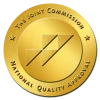Self-harm, or intentionally self-injury, can be difficult for people to understand. While it is not always accompanied by suicidal thoughts, people who engage in self-harm are at heightened risk for attempting and completing suicide if they do not get help. At Palms Behavioral Health in Harlingen, Texas, we treat adolescents, adults, and seniors who are struggling with their mental health.
Why People Engage in Self-Harm
Self-injurious behaviors often begin in adolescence or early adulthood and occur most often among people with depression, anxiety, and emotional dysregulation. There are a variety of reasons why people choose these behaviors, but it often boils down to lacking the coping skills to manage difficult emotions. Self-harm can be caused by:
- Seeking relief from distressing feelings
- A desire to replace emotional pain with physical pain
- Lack of perceived control over one’s body, feelings, or life in general
- Trying to replace numbness with any sort of feeling
- Punishing oneself for something
Types of Self-Injury
Generally, when people engage in self-harm, they do so in private, and they use the same method each time. The most common areas people target on their bodies are the arms, legs, chest, and abdomen. Some of the most common methods of self-harm include:
- Cutting, scratching, or stabbing with a sharp object
- Burning with matches, cigarettes, lighters, or heated, sharp objects like blades
- Carving words or symbols into the skin
- Hitting, punching, biting, or head-banging
- Inserting objects under the skin
- Pulling out hair
Who is Most At Risk?
Certain factors can increase the likelihood of a person intentionally harming themselves, such as:
- Being young (onset often occurs around the age of 13-14)
- Experiencing difficult personal issues
- Being female
- Having friends who engage in self-harm
- Struggling with substance misuse
- Having a mental illness, particularly
- Borderline personality disorder
- Depression
- Anxiety
- Post-traumatic stress disorder (PTSD)
- Eating disorders
- Having a history of abuse, trauma, unstable family life, struggles with sexual identity, or isolation
Red Flags for Self-Harm
Watching for the following signs may help you to detect if a loved one is engaging in self-injurious behaviors:
- Scars arranged in patterns
- Frequently having fresh cuts, bruises, bite marks, or other wounds
- Rubbing an area excessively to create a burn
- Keeping objects around that they can use to hurt themselves
- Wearing long sleeves and/or long pants to conceal injuries, even when it is too warm to comfortably do so
- A tendency toward quickly changing, impulsive, and unexpected moods
- Expressing helplessness, hopelessness, or worthlessness
Why Should We Address Self-Harm?
While self-harm often occurs without suicidal thoughts, it should still be taken seriously and addressed promptly because:
- Self-harm is closely connected to future suicide attempts, even more so than a history of past suicide attempts.
- One thing that prevents people from engaging in suicide is fear of pain and injury, which decreases as a person engages in more and more self-injurious behavior.
- Self-harm behaviors can expose a person to infections and lead to accidental death.
- People who engage in self-harm may experience scarring and disfigurement.
- Engaging in self-harm can lead to increased shame and guilt later, which can undermine mental health.
Alternatives to Self-Harm
Ideally, people who engage in behaviors to hurt themselves would be able to just stop, but it isn’t always that easy. Self-harm can be a difficult cycle to break. Often, it is more effective for them to find alternative behaviors to utilize in place of this unhealthy coping skill:
- Naming the emotion, so it becomes less scary
- Using a grounding exercise
- Talking to a trusted person
- Showering
- Spending time in nature
- Wrapping up in a blanket
Treatments for Self-Harm
Once it is recognized that a person is engaging in self-harm, getting them help is not that different from getting them help for any other mental health concern. Avoid shaming them, and do not punish them or tease them for utilizing this coping skill. Instead:
- Contact 988 if they are in a mental health crisis that requires urgent support.
- Call 911 or take them to the nearest emergency room if they are actively suicidal.
- Help them access therapy and/or medications for underlying mental health conditions that could be contributing to the self-injurious behaviors. Cognitive behavioral therapy (CBT) and dialectical behavior therapy (DBT) are two types of therapy that can be especially helpful for people who engage in self-harm.
At Palms Behavioral Health, we know that it can be difficult to watch a loved one struggle with self-injurious behaviors. We offer individualized, trauma-informed, evidence-based treatment in a cutting-edge facility. Our team of professionals are experienced at helping patients and their families recover from behavioral health struggles.







